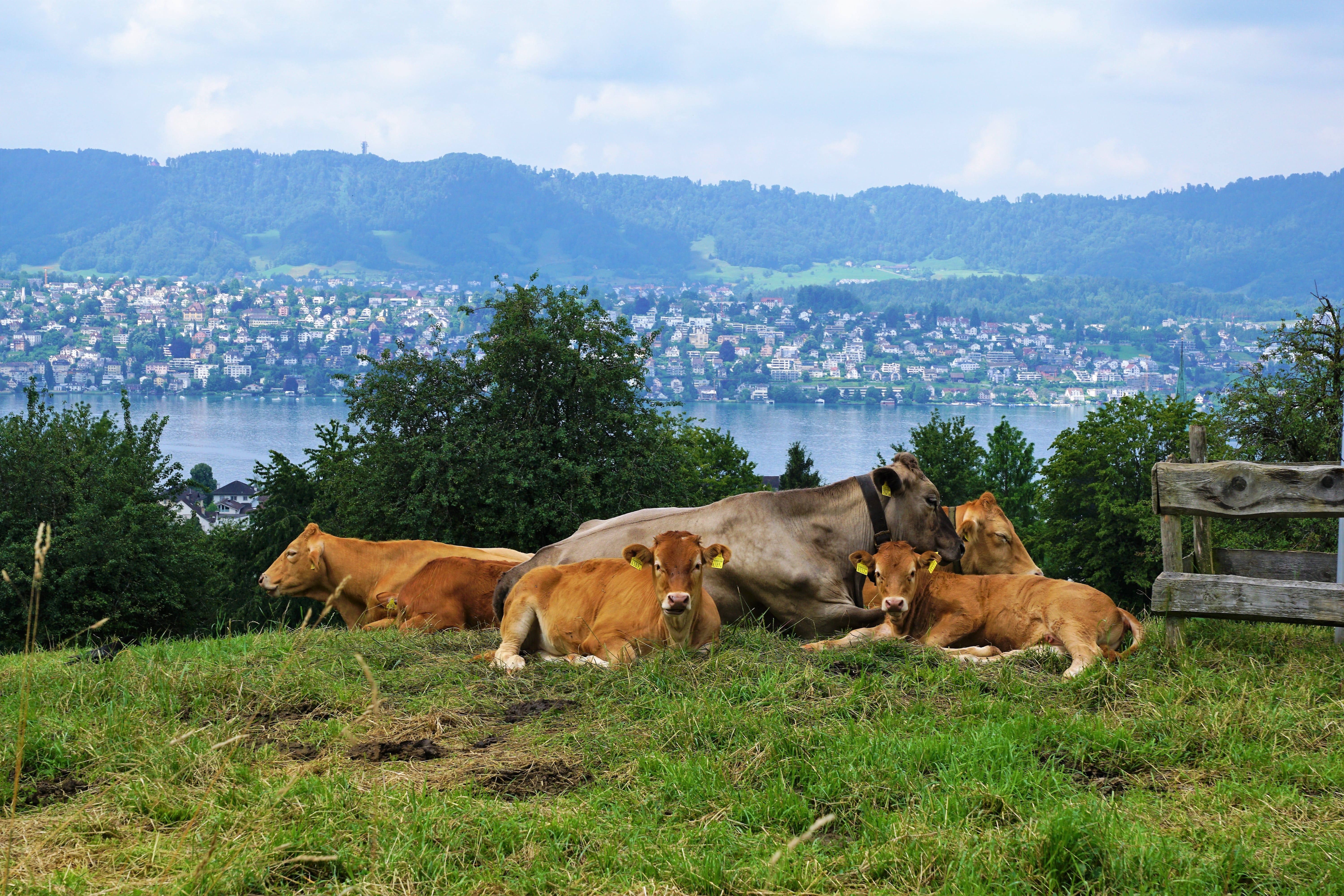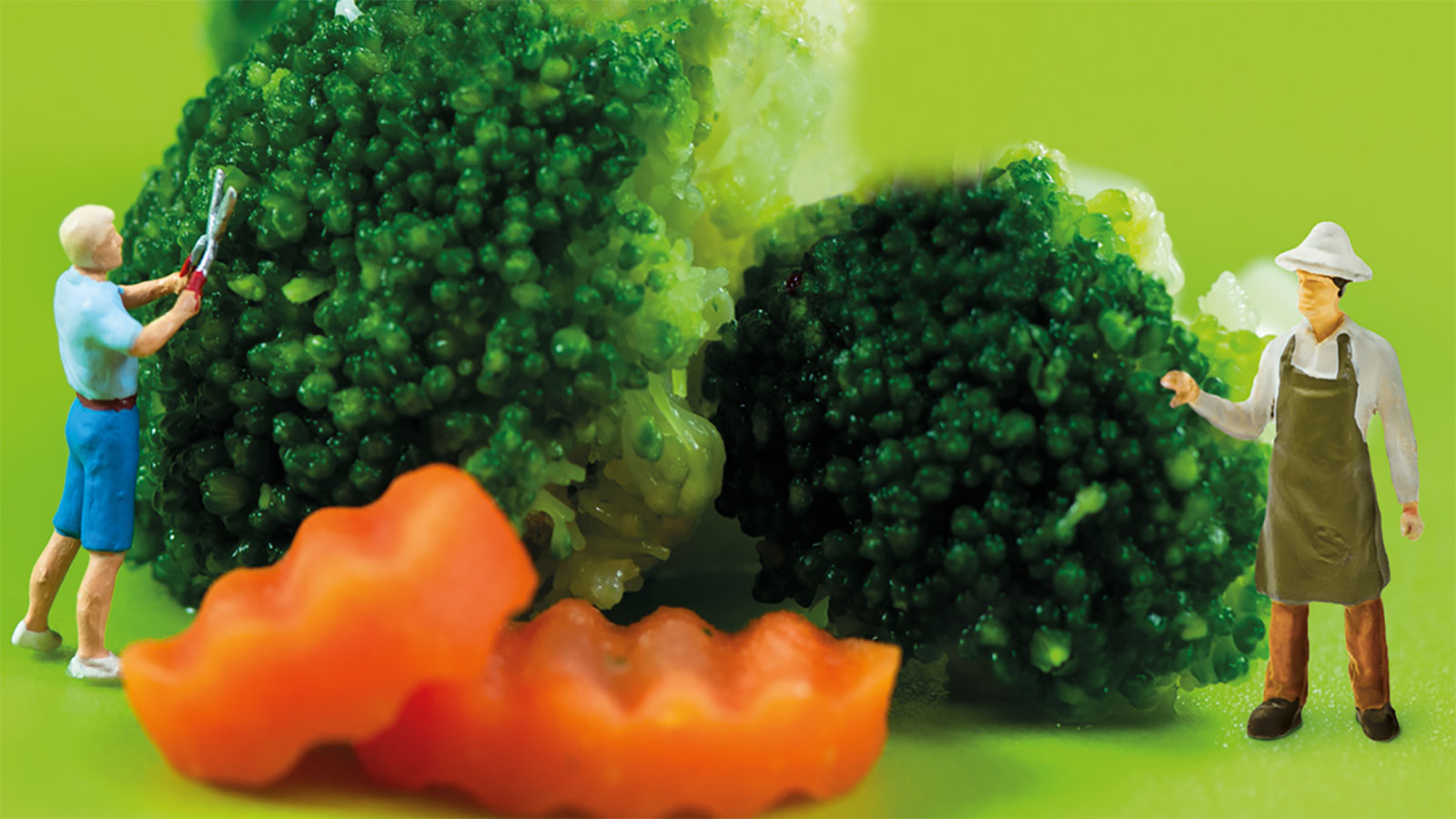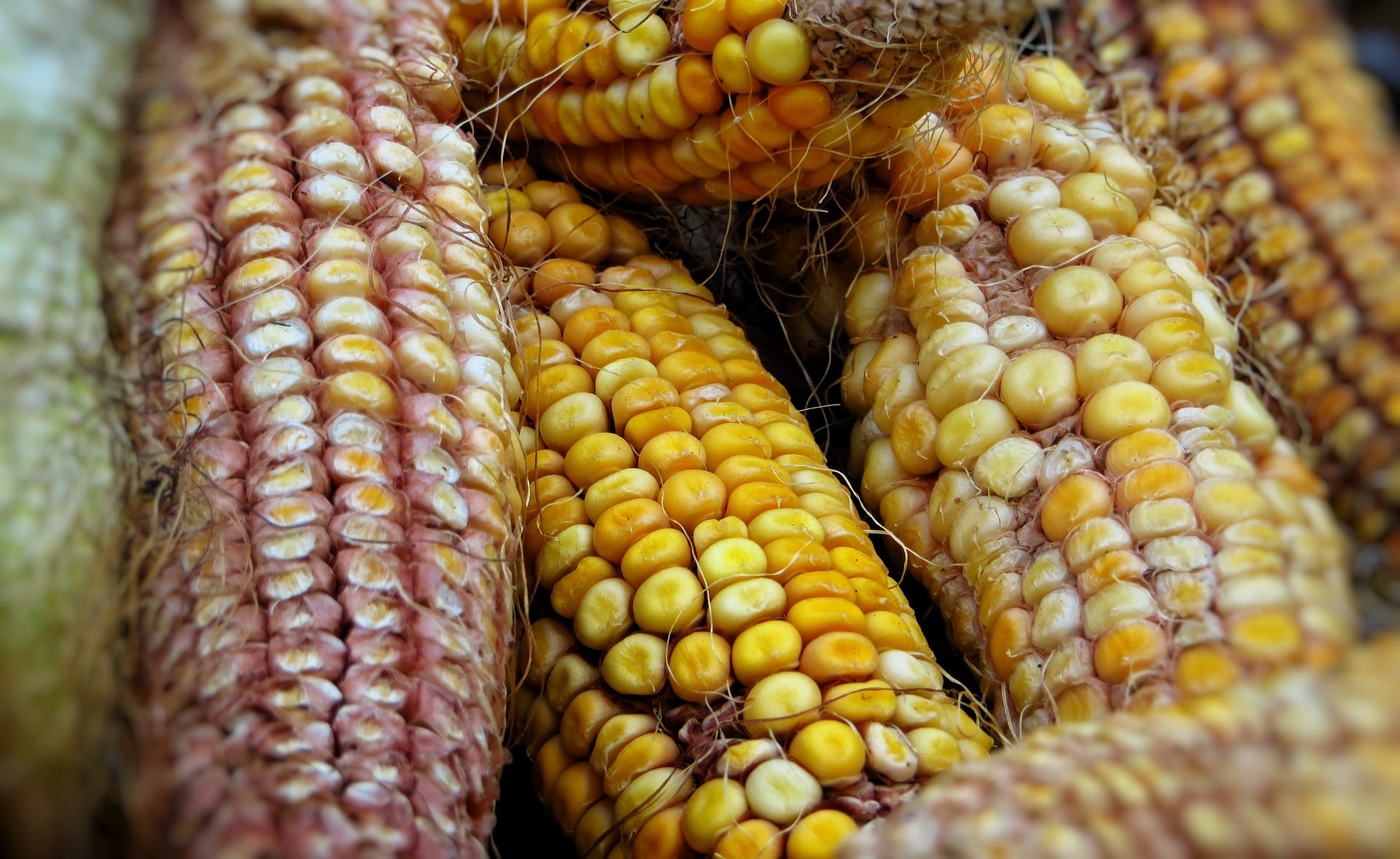Introduction
The sustainability of food systems — the interconnected web of actors and activities from agricultural or fisheries inputs through food consumption — has been a topic of global concern for several decades, particularly as the negative impacts of climate change on food production have become more apparent. One of the main things that has changed in the past decade in this discussion is the growing sense of urgency about food system transformation. In 2009, the International Assessment of Agricultural Knowledge, Science & Technology (McIntyre et al., 2009) declared that “business as usual will no longer suffice”; in November 2018, the Inter-governmental Panel on Climate Change (IPCC, 2018) told us that we have 11 years to make a major shift in how we conduct business. On May 6, the report of the Intergovernmental Science-Policy Platform on Biodiversity & Ecosystem Services (Díaz et al., 2019) documented drastic declines in biodiversity worldwide. All three of these reports were created by hundreds of scientists around the world, and they all recognized land use transformation and food system practices as major causes of climatic and ecosystem collapse.
At the same time that we are better understanding the urgent need to make changes in our food system, new tools and knowledge have been developed that may help in this quest. Three innovations of particular note which I’ll address in this article are agroecology, true cost accounting, and democratic food system governance. None of these practices is in widespread use yet, nor accepted unanimously by food system scientists and policy-makers. Yet all three innovations show great potential for transforming food systems, if the necessary collaboration across different sectors of society can be mustered.
It is important to first make clear why food system transformation, rather than more modest improvements, is necessary. At the most fundamental role, global and local food systems are failing to provide healthy food for all, and failing to ensure decent livelihoods for producers (fishers, farmers, rancher, pastoralists) and others working in the entire food system, from seed to sewer. The food system should be a good source of employment, particularly for the small-scale producers who grow or fish up to 80 percent of the food consumed worldwide (FAO, 2014). All food system practices should maintain ecological integrity, rather than degrading our environment and undermining the possibility of future food security for coming generations. And finally, food systems should be controlled by the public, and people should have the ability to decide what kind of food system will support their needs. These are basic attributes of a food system that functions in the public interest.
However, our current food system at the global scale and in most localities falls far short of these goals. Agriculture and food systems are major culprits in biodiversity loss or “biosphere integrity” and disruption of nitrogen and phosphorus cycles, both of which are past safe thresholds (Steffen et al., 2015). In addition, agriculture contributes in significant ways to freshwater depletion and contamination, land-system change, and climate change. Agriculture uses about 70 percent of the world’s freshwater, with cereal grains using 27 percent, meat 22 percent and dairy percent (Hoekstra & Mekonnen, 2012). Vermeulen et al. (2012) estimated that agriculture contributes about 15 percent of anthropogenic greenhouse gases through field practices, another 15-17 percent through other food system activities. The recent IPBES report states that approximately 25 percent of greenhouse-gas emissions come from land clearing, crop production and fertilization, with animal-based food contributing 75 per cent of that (Díaz et al., 2019). Soil degradation has reached acute stages, with about 20 percent of the earth’s vegetated surface showing loss of productivity between 1998 and 2013 (UNCCD, 2017). The earth has entered an era termed the “Anthropocene” (Crutzen, 2002), to emphasize that no place is isolated from the effects of human activity.
Food systems cause health and social problems, in addition to environmental problems. Human rights of farmers, workers, communities and the public are being systematically abused (Anderson, 2008). Our global food system is making people sick rather than nourishing us, and failing to decrease food insecurity consistently. Rates of very low global food insecurity rose in 2018 to 821 million, rising for the third year in a row after a prolonged period of decline until 2014 (FAO, IFAD, UNICEF, WFP and WHO, 2018). At the same time, obesity is rising worldwide and no country has been able to effectively combat it. Non-communicable diseases such as diabetes and cardiovascular disorders, exacerbated by obesity, are responsible for about 71 percent of all deaths; and diet is one of the primary culprits, along with smoking, physical inactivity and harmful use of alcohol (WHO, 2018). At the same time that food we eat is making us sick, the ability of antibiotics to treat infectious diseases is declining as more bacteria become antibiotic-resistant. Here again, the food system is largely to blame: more antibiotics are fed to livestock than given to humans, and their indiscriminate use leads to resistance (Foodprint, 2017).
Social issues connected with food systems include the hallowing out of rural communities as young people move to cities, resulting aging farm populations, low prices received by farmers (often below operating costs), and rapid concentration of businesses in all food system activities from inputs through retail grocers. The “nutrition transition” (Popkin, 1994) in which people in poor countries begin to eat more salt, fat, sugar and processed foods as their incomes increase has resulted in the loss of culture and food traditions associated with distinct cultures. While these massive problems have developed in our food system, scientists have failed to perceive the interconnections among healthy food production systems, ecological integrity and public health (IPES-Food, 2015).
Industrialized food systems in particular are degrading the planet and human communities. These food systems typically are characterized by large scale, heavy use of synthetic inputs from off the farm, standardization (e.g., monocropping) and replacement of human or draft-animal labor by fossil fuels. Industrialized food systems maximize high productivity and yields, at the expense of ecosystem services and social benefits. Such systems originated in the United States and other industrialized countries, and have rapidly moved into poor countries. Powerful international interests keep industrialized food systems locked in place and expanding, despite indisputable knowledge of the environmental, health and sociocultural problems that they cause (IPES-Food, 2017).
Many existing models of changing business, production systems and consumption patterns show promise, but need to be strengthened through research and policy incentives. In particular, we see a considerable amount of innovation at the local level that needs to be lifted up to the national and international scale. Local innovation has the benefits of speedy potential implementation, in keeping with the urgency of the problems described above and in contrast with national or international action. City governments tend to be more nimble and responsive to their citizens than national governments with citizens more able to participate in city governance in most places than in governance at a larger scale. Furthermore, initiatives at the local level are visible to residents, so that they can see immediate effects of their own participation in making them happen and will continue to support them.
There is a plethora of local solutions to environmental, health and sociocultural problems of food systems at a range of scales. At the micro-scale, the city of Toronto has started a pollinator initiative to educate about the importance of protecting pollinators and provide small-scale grants to communities that want to increase pollinator habitat (City of Toronto 2019). At the city sector scale, Seoul has become well-known for its success in reducing solid waste. Citizens are charged for the amount of waste they produce, and the amounts of waste that are recycled rather than landfilled have increased dramatically. Food waste recycling in particular has increased to 95 percent since it was prohibited from the solid waste stream in 2005, and Seoul has cut the amount of food waste generated since 1995 by 400 metric tons per day (Kim, 2019). At the city-wide scale, Belo Horizonte in Brazil, a city of 2.5 million people, stands out for its programs to implement the right to food, which have virtually eliminated child hunger and sharply reduced malnutrition. A range of programs include cash transfers to poor families, subsidized staple foods, healthy school meals and marketing preferences for small-scale farmers. The program has been so successful that is served as the model for the United Nations’ Zero Hunger Initiative (Chappell, 2018).
Three approaches to addressing food system problems at local to global scales
1) Focus on agroecology as the antidote to industrial food systems
Agroecology is emerging around the world as the most promising alternative to industrial food systems, yet many people have never heard of it. Agribusiness industries and powerful government interests that are closely aligned with them have tried to suppress or distort the knowledge that agroecology has yields comparable to or sometimes exceeding those of industrial agriculture, and also protects biodiversity and improves soil fertility and farmer incomes (IPES-Food, 2017; Rosset and Altieri, 2017). The United Nations’ Food and Agriculture Organization (FAO) has held two international conferences on agroecology (in 2014 and 2018) and several regional conferences. Based on input from the conferences, FAO published a list of ten elements of agroecology (FAO, 2018): diversity, synergies, efficiency, resilience, recycling, co-creation and sharing of knowledge (describing common characteristics of agroecological systems, foundational practices and innovation approaches); human and social values, culture and food traditions (context features); and responsible governance plus a circular and solidarity economy (enabling environment).
Despite the documented advantages of agroecology for farmers and communities, agroecological research is woefully underfunded at present. Studies in the US and UK (DeLonge et al., 2016 and Pimbert and Moeller, 2018 respectively) found that agroecological research received <1.5 percent of the US research and extension budget in 2014 and only 5 percent of the UK agricultural aid budget (0.5 percent of the total UK aid budget) since 2010.
More rapid movement toward replacing industrial systems with agroecological systems will require specific research, as well as increased funding. Research needs include documenting the full impacts of food system reforms on food security and achievement of food rights. Programs and practices aimed at helping humanity to live within planetary boundaries and “within the donut” with full respect for human rights and ecological integrity (Anderson 2008, Raworth 2017) need careful testing before implementation. Scientists could help to conceptualize “virtuous circles” to replace current vicious food system circles and linear patterns (Jones et al., 2010). On the consumption side, research is needed to define and articulate sustainable diets for industrialized countries and understand how to make cultural shifts in all countries to reverse the harmful aspects of the nutrition transition while preserving health. And finally, since much of the data needed to monitor where we want to go as a society are unavailable and difficult to obtain, researchers need to work with communities and businesses to measure the true costs of food and diets. New measures of well-being which are appearing in different countries, such as Bhutan’s Happiness Index and the concept of buen vivir in Latin America, show promise for better measuring quality of life than traditional metrics such as Gross Domestic Product.
2) Understand and incorporate the true cost of food in business decisions
True-cost accounting is an economic modeling method being applied more widely by food businesses. It identifies and quantifies the total cost of food and agricultural production depending on the type of farming system, which is especially important since the types and severity of problems associated with food system production are so dependent on farming system. The goals of true cost accounting are to improve the transparency of the true cost of producing food to increase fairness to farmers, make food more affordable for consumers, and decrease environmental and public health impacts.
True cost accounting is important because, at present, people are virtually unable to make food choices based on their impacts. The retail price of food does not include costs such as pollution, water scarcity, soil degradation, increasing greenhouse gas emissions and poor labor standards; yet people in some part of the world are paying these costs. Such impacts are considered “externalities”; and the farmer, food manufacturer, distributor or retailer usually can get by with defraying the costs to others.
Assigning a value to “public goods” (those distributed to society without private profit) can help policy-makers and businesses to make better decisions, as they consider the full costs and benefits to society and the ecosystem. Of course, conscientious consumers can already select organic, Fair Trade, or other certified goods that internalize some costs; but these are usually more expensive. Food system transformation is not possible through the voluntary assumption of extra costs by a few wealthier consumers. True-cost accounting is a way to spread the costs (and benefits) across society and provide incentives to businesses to reduce those costs at every food system activity. Examples of ways that costs and benefits can be redistributed more fairly are payments for ecosystem services, eliminating pernicious subsidies for practices that degrade the environment, regulating food manufacture and antibiotic use for livestock to better protect human health, and introducing tax breaks for conservation.
Although knowing the true cost of food is a big step forward, internalizing those costs so that they are paid by the entities that profit from damaging practices is not simple. Furthermore, some people will not be able to afford the true cost of food; acknowledging healthy food as a human right is a prerequisite to ensure that every person has economic and physical ability to buy, grow or otherwise obtain the food needed for a healthy life.
Applying the true cost of food will require changes in all food businesses, from private farms to international food corporations. Cooperation from food businesses is essential to develop solid metrics; many of the costs of food systems are not well-known at present. Once systems for assessing costs are in place, businesses will need to incorporate the true costs of food into considerations of risk and cost. As they develop innovations, they will need to test each according to rigorous criteria of whether it will contribute to sustainable food system and understand fully who will benefit, how, and at what cost to whom. In developing innovations, businesses can seek out complementary market-based and social innovations.
Many organizations are working to define and implement the true cost of food. UNEP led the TEEB Agrifood Project as part of the Economics of Ecosystems and Biodiversity project (TEEB, 2018). The Global Alliance for the Future of Food, a collective of funders, identified the true cost of food as one of its foci and has produced useful materials and funded a Community Practice to develop it further (https://futureoffood.org/impact-areas/true-cost-accounting/). The World Business Council for Sustainable Development has launched an initiative, Food Reform for Sustainability and Health (FReSH), to make the business case for identifying the true cost of food (WBCSD, 2018).
3) Implement democratic governance of food systems
The final innovation that I want to highlight, which will help to advance the former two measures, is movement toward democratic governance of food system. “Governance” refers to all forms of decision-making and policy-setting, both within and beyond formal governmental structures. With increasing concentration of food industry in all food system activities, political power has also become concentrated away from farmers and citizens (IPES-Food, 2017). Food industry consistently leverages its economic power into political power, pushing for weakened social and environmental standards to increase profits for shareholders and managers.
Democratic governance of food systems has multiple advantages; but primarily it promises to align decision-making more closely with goals that serve public rather than private interests, such as ecological integrity, the right to food and nutrition, creation of job opportunities in all food system activities, fair prices for producers, good wages and working conditions for workers, and public health through whole foods rather than ultra-processed foodstuffs. For each of these issues, industry has tried to make shortcuts that increase profits rather than health and quality of life. Among the advantages of democratic governance are more input to problem-solving, and thus the potential for better solutions and buy-in from all actors; greater strength and collective impact of “alternative” food systems, from agroecological production through sharing and solidarity economy solutions to hunger; increased attention to the right to food and food justice, food access and distribution rather than just greater availability of food (which serves food industry but may never “trickle down” to the people who most need food); and support for more local and decentralized food systems which can lead to greater resilience in a changing climate.
While collaboration and participation across all sectors is needed for democratic governance, policy-makers have key roles. They have the power to open up policy forums to include civil society, as happened in the 2009 reform of the Committee on World Food Security (CFS; McKeon, 2015). CFS, the premier intergovernmental forum for negotiation of issues related to food security, now allows social movements and non-governmental organizations to participate on par with private sector representatives, international scientific organizations, staff of United Nations agencies, and country delegates. The participation of “front-line” representatives who are experiencing hunger and food insecurity in their communities has significantly improved the accountability of governments to fulfill their peoples’ rights. Policy-makers can also create new spaces for discussion of food futures among multiple partners, as food policy councils do at the municipal and state levels in some countries. In addition, policy-makers can support producers using agroecological methods to restore degraded land and water and prevent future degradation. They also can remove subsidies to businesses that permit them to externalize costs, and provide incentives to businesses that use true cost accounting. In short, more democratic governance of food systems will help food system actors to implement the other innovations emphasized in this article.
Conclusion
There are many ways to work toward transforming local and global food systems, and the collaboration of all actors is needed to be successful. This is the only way that the Sustainable Development Goal of “leave no one behind” can be met. As we work on transforming the food system, we need to stay focused on what it should provide and the most feasible paths to reach these goals:
• Access to healthy food for everyone by purchase, growing the household’s food with access to land and other necessary resources, and rights-based approaches that focus first on poor and disadvantaged populations and include them in every step.
• Employment opportunities at living wages in all sectors of the food system.
• Opportunities for small-scale producers to produce food sustainably through agroecology (capacity-building, tech assistance, subsidies and incentives).
Voice in finding solutions to current problems through democratic governance.
References
Anderson, Molly D. 2008. Rights-based food systems and the goals of food systems reform. Agriculture and Human Values 25: 593.
Chappell, M. Jahi. 2018. Beginning to End Hunger: Food and the Environment in Belo Horizonte, Brazil, and Beyond. Davis, California: University of California Press.
City of Toronto.2019. Pollinator Protection Strategy. https://www.toronto.ca/services-payments/water-environment/environmentally-friendly-city-initiatives/reports-plans-policies-research/draft-pollinator-strategy/
Crutzen, Paul J. 2002. Geology of mankind: the Anthropocene. Nature 415: 23.
Díaz, Sandra, Josef Settele and Eduardo Brondízio (Eds.). 2019. Summary for policymakers of the global assessment report on biodiversity and ecosystem services of the Intergovernmental Science-Policy Platform on Biodiversity and Ecosystem Services. https://www.ipbes.net/system/tdf/spmuneditedadvanceforpostinghtn.pdf?file=1&type=node&id=35275
Food and Agriculture Organization (FAO). 2014. The State of Food and Agriculture 2014: Innovation in Family Farming. Rome, FAO. http://www.fao.org/3/I9037EN/i9037en.pdf
Food and Agriculture Organization (FAO). 2018. The ten elements of agroecology: Guiding the transition to sustainable food and agricultural systems. Rome, FAO.
FAO, IFAD, UNICEF, WFP and WHO. 2018. The State of Food Security and Nutrition in the World 2018. Building climate resilience for food security and nutrition. Rome, FAO.
Foodprint. 2019. Antibiotics in our food system. https://foodprint.org/issues/antibiotics-in-our-food-system/
Hoekstra, Arjen Y. and Mesfin M. Mekonnen, 2012. Water footprint of humanity. Proceedings of the National Academy of Science 109(9): 3232-3237.
Intergovernmental Panel on Climate Change (IPCC). 2018. Global warming of 1.5° C. https://www.ipcc.ch/sr15/
International Panel of Experts on Sustainable Food Systems (IPES-Food). 2015. The New Science of Sustainable Food Systems: Overcoming Barriers to Food Systems Reform. http://www.ipes-food.org/img/upload/files/NewScienceofSusFood.pdf
International Panel of Experts on Sustainable Food Systems (IPES-Food). 2017. From Uniformity to Diversity: A Paradigm Shift from Industrial Agriculture to Diversified Agroecological Systems. http://www.ipes-food.org/img/upload/files/UniformityToDiversityFULL.pdf
International Panel of Experts on Sustainable Food Systems (IPES-Food). 2017. Too big to feed: Exploring the impacts of mega-mergers, consolidation and concentration of power in the agri-food sector. http://www.ipes-food.org/img/upload/files/ConcentrationFullReport.pdf
Jones, Andy, Michel Pimbert and Janice Jiggins. 2010. Virtuous Circles: Values, Systems and Sustainability. International Institute for Environment and Development, London.
Kim, Max S. 2019. The country winning the battle on food waste. Huffington Post. https://www.huffpost.com/entry/food-waste-south-korea-seouln5ca48bf7e4b0ed0d780edc54
McIntyre, Beverly D., Hans R. Herren, Judi Wakhungu, Robert T. Watson. 2009. Agriculture at a Crossroads: Global Report. International Assessment of Agricultural Knowledge, Science and Development. Washington, DC: Island Press.
McKeon, Nora. 2015. Food Security Governance: Empowering Communities, Regulating Corporations. London: Routledge Press.
Pimbert, Michel and Nina Isabella Moeller. 2018. Absent Agroecology Aid: On UK Agricultural Development Assistance Since 2010. Sustainability 10: 505-515.
Popkin, Barry M. 1994. The nutrition transition in low income countries: an emerging crisis. Nutrition Reviews 52(9):285-298.
Raworth, Kate. 2017. Doughnut Economics. Seven Ways to Think Like a 21st-Century Economist. White River Junction, Vermont: Chelsea Green Publishing.
Rosset, Peter and Miguel Altieri. 2017. Agroecology: Science and Politics. Fernwood Publishing.
Steffen, Will, Katherine Richardson, Johan Rockström, Sarah E. Cornell, Ingo Fetzer, Elena M. Bennett, Reinette Biggs, Stephen R. Carpenter, Wim de Vries, Cynthia A. de Wit, Carl Folke, Dieter Gerten, Jens Heinke, Georgina M. Mace, Linn M. Persson, Veerabhadran Ramanathan, Belinda Reyers and Sverker Sörlin. 2015. Planetary boundaries: Guiding human development on a changing planet. Science 347 (6223): 1259855.
The Economics of Ecosystems and Biodiversity (TEEB) (2018). Measuring what matters in agriculture and food systems: a synthesis of the results and recommendations of TEEB for Agriculture and Food’s Scientific and Economic Foundations report. Geneva: UN Environment.
United Nations Convention to Combat Desertification. 2017. The Global Land Outlook, 1st Edition. Bonn, Germany.
World Business Council for Sustainable Development (WBCSD). 2018. True cost of food: Unpacking the value of the food system. Discussion Paper 1. https://www.wbcsd.org/Programs/Food-Land-Water/Food-Land-Use/FReSH/Resources/unpacking-the-value-of-the-food-system
World Health Organization. 2018. Noncommunicable diseases. https://www.who.int/en/news-room/fact-sheets/detail/noncommunicable-diseases.










